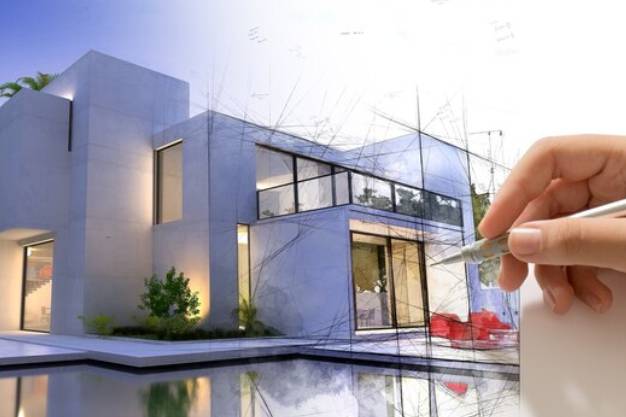Here’s Everything You Need To Know About Minimalistic Home Design

Minimalism is here to stay and branching into the world of home design as well. Gone are the days where extravagant and expensive meant more. Minimalism calls for carefully curated pieces and furniture and clutter-free spaces. If done right it results in more comforting, liveable, and nurturing environments.
Minimalism for me is about keeping space as untouched as possible, simple, classic uncluttered but also elevated with unique, and chic home accents.
What is Minimalistic Design?
Minimalist design is focusing on the essential. Minimalist architectural designers focus on the connection between perfect symmetry, lines, elegant lighting. Minimalistic design has been highly influenced by Japanese traditional design and architecture. The concept of minimalist architecture is to strip everything down to its essential quality and achieve simplicity. The idea is not complete without adding furniture or decorative accents, but those elements are more for functionality.
Benefits of a Minimalist Home Design
Practically we do not need so many things; we can live in any space with a lot less. Think about how often you use the side table that you bought on a whim or the chair you bought at the last exhibition. Do you really like the painting that’s currently on the wall or is it just there to fill the space? Less cluttered homes have a calming effect. It is easier to clean and maintain, has plenty of space to move. And is just pleasing to the eye.
Minimalistic Colour Schemes
Imagine a minimalistic room, was white the only colour that came up? This is because we associate minimalism with shades of white or cream. But minimalism is a style, a theme, so you don’t need to stick to one shade card for your walls. Of course some colours and too bright or dark like bright red, black, orange but that doesn’t mean you can’t use lighter more muted versions of these colours. Think of white as the base shade for any colour you pick, so lavender, blush pink, eggshell, pale blue, light green, a soft grey, a faded orange. The idea is to fade into the background and look soft and airy.
Elements That Make Up A Minimalistic Home
Soothing colour palettes, clean bare walls, and plenty of floor space, the biggest struggle with a minimalist home is making sure it transmits a warm and cosy feeling and does not make it look too empty and cold. The key is not your furniture but your style, needs and essentials. Here is what you need to keep in mind while designing or redecorating your home.
1. Form and Functionality
Make sure your furniture has a purpose and is useful—sofas to lounge in, chairs for comfortable seating, tables that are at a convenient height, curtains that are heat resistant. Most important these pieces need to complement each other.
2. Give It A Personal Touch
Your space needs to have elements that reflect your taste and personality. Think paint colour, or an art piece, posters, wallpaper, style of furniture, or the decorative accessories you choose.
3. Quality Over Quantity
Since you are looking for chic and functional, budget more for less. Invest in top quality furniture and durable materials over cheap know-offs.
4. Think Storage
Since the design demands a wider, emptier space opt for clever storage hacks—built-in cabinets, vertical storage, multi-functional furniture etc.
5. Experiment With Texture
Just because you use muted tones doesn't mean you can't add depth to design, think layers and textures with different materials and fabrics.
6. Blend different styles
Don’t stick to one theme, curate pieces and furniture that complement and do not match each other. A classic beige sofa would look amazing with a Moroccan inspired bright rug.
7. Include Pops of Colour
Muted interiors and walls can look blah, and unimpressive make the space stand out by adding one item that is bright, bold and catches attention.
8. Geometry Matters
The clean lines, detail and symmetry of a windowpane, table or even the sofa make a huge difference in how the space looks. Add some contrast with varied heights and different shaped lamps, decorative pieces or even shelves.
9. Incorporate Biophilic Design
Biophilia is introducing plants into design. From creating spaces that open up onto the outdoors to incorporating sustainably sourced and reclaimed woods into interior décor, having plants indoors to improve air quality, this trend has been gaining ground. Biophilic design is driven by our increased interest in ensuring our homes are healthy places to live.
10. Use Nature Inspired Materials
As more and more people are re-evaluating their impact on Earth, design trends are changing to keep up with this shift. Sustainable interior design materials lower your ecological footprint and add an exciting new feel to your home. There are an array of choices – bamboo, natural stone, reclaimed wood, repurposed anything, glass, ceramic, textiles like wool, linen, and hemp.
11. Identify The Correct Space
Just like in life, everything has a space and a purpose, it is pretty much the same with minimalistic homes. Streamline your home, do not keep things where they are not meant to be kept in, for example, refrigerator in the living room or the microwave in the passageway. De-clutter your space and trust us you will find space for the item in the correct room.
12. Eliminate frames and bones
Think platform beds, grounded sofas, and invisible bookshelves. They are unconventional yet classic and give you a chic modern look.
Source: hercircle.in
Get To Know About: Top House Painting Colours & Designs 2022: Best Home Colour Combinations
Get More Information About Property Agent in Thane For More Details Visit Propertythane.com And Email Us On info@propertythane.com
Back to All Real Estate Articles
Share This:

